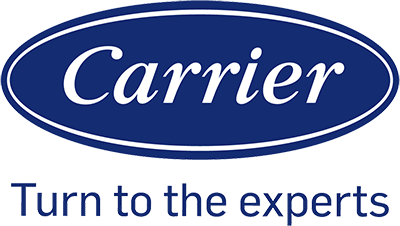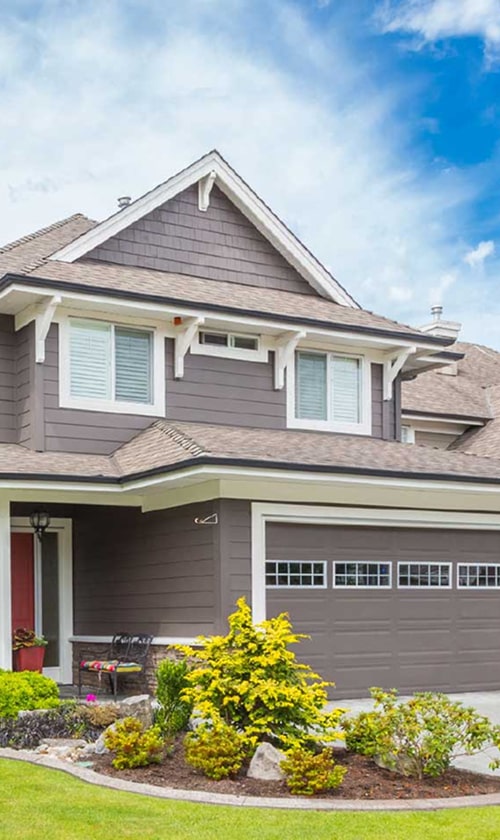Understanding Your HVAC System

Before diving into maintenance, it’s crucial for homeowners to recognize the main components that make up their HVAC system and understand how thermostats contribute to its efficiency.
Components of HVAC Systems
An HVAC system is comprised of several key components, each with a specific function in maintaining a comfortable indoor climate.
- Furnace: It typically uses gas or electricity to provide heat and is a core component for heating.
- Heat Pump: This device can both heat and cool homes by transferring heat from the outdoors inside and vice versa.
- Air Conditioning Units: These systems remove heat from the interior of the home, reducing indoor temperatures.
- Central Air Conditioners: They circulate cool air through a system of supply and return ducts, offering a whole-house cooling solution.
Each component works in concert to deliver climate control, ensuring that the environment within a home is maintained at a consistent and comfortable temperature.
The Role of Thermostats in HVAC Efficiency
Thermostats serve as the central control for HVAC systems.
- Thermostat Functionality: It measures the current temperature and signals the HVAC system to turn on or off in order to maintain the desired temperature setting.
- Efficiency: Proper use of a thermostat can lead to significant energy savings by regulating heating and cooling cycles. Programmable thermostats allow homeowners to set temperatures according to their schedule, reducing energy usage when a home is unoccupied.
Basic HVAC Maintenance Procedures

Homeowners can enhance the longevity and efficiency of their HVAC systems by regularly replacing air filters and keeping air ducts and vents clean.
Regular Filter Replacement
HVAC air filters trap dust, pollen, and other airborne particles, ensuring clean airflow. Filters should be replaced every 1-3 months, based on the manufacturer’s recommendations and the household’s specific needs. Heavily used systems or homes with pets may require more frequent changes.
- Frequency: Replace every 1-3 months.
- Steps:
- Turn Off HVAC: Ensure the system is off before proceeding.
- Locate Filter: Find the filter housing on the indoor unit.
- Remove Old Filter: Slide out the old filter and dispose of it properly.
- Insert New Filter: Place the new filter in, following airflow direction arrows.
- Benefits:
- Improved energy efficiency: A clean filter requires less energy to push air through.
- Better indoor air quality: Reduces potential allergens and dust in the air.
Cleaning Air Ducts and Vents
Clean air ducts facilitate optimal airflow and contribute to the overall air quality in the home. Ducts should be inspected for debris and dust build-up annually, with cleaning as needed. Vents can be cleaned more frequently to prevent blockages that impede airflow.
- For Vents:
- Frequency: Inspect and clean every 3-6 months.
- Method:
- Unscrew Vent Covers: Carefully remove covers from vents.
- Vacuum: Use a vacuum with a brush attachment to remove loose dust.
- Wipe Clean: Use a damp cloth to clean the grill and surrounding area.
- For Ducts:
- Frequency: Professional inspection annually.
- DIY Cleaning:
- Visual Check: Inspect accessible ducts for visible dust or mold.
- Soft Brushing: Gently brush accessible duct areas.
- Vacuum: Use a heavy-duty vacuum to remove loosened debris.
Optimizing System Performance

Maintaining optimal performance in a home HVAC system ensures both efficiency and cost-effectiveness. Homeowners can achieve this through consistent system checks and technological upgrades.
Ensuring Proper Airflow
Proper airflow is crucial for maintaining the performance and efficiency of an HVAC system. Homeowners should regularly check and replace air filters to prevent blockages that can strain the system, leading to higher energy consumption and increased energy bills. It’s recommended to follow the manufacturer’s guidelines for filter maintenance. Additionally, ensuring that vents are not obstructed by furniture or curtains can further improve airflow and system performance.
- Regular Maintenance Tasks:
- Replace air filters every 30-90 days, depending on usage.
- Keep registers and vents clear of obstructions.
- Schedule annual inspections with a licensed technician.
Upgrading to a Programmable Thermostat
Upgrading to a programmable thermostat can significantly reduce energy bills and enhance HVAC efficiency. These devices allow homeowners to set temperature schedules that align with their routines, preventing the system from running unnecessarily. With smart thermostats, one can even adjust settings remotely, improving convenience and further optimizing energy consumption.
- Benefits of a Programmable Thermostat:
- Set specific temperature schedules to match daily routines.
- Adjust temperatures remotely for unexpected changes in plans.
- Track energy usage and make informed adjustments to save on bills.
Preventative Maintenance Measures
Regular preventative maintenance is key to ensuring the safety, efficiency, and longevity of an HVAC system. Homeowners can avoid common repairs and extend the lifespan of their units by performing routine checks and care.
Inspecting Coils and Fins
Evaporator and Condenser Coils:
A homeowner should routinely inspect both the evaporator and condenser coils. One should ensure they are clean and free from debris, as dirty coils can reduce the system’s efficiency and strain its operation.
- Safety Tip: Always disconnect power to the unit before performing any maintenance to prevent electrical hazards.
- Cleaning: Use a soft brush to gently remove any loose dirt. For more thorough cleaning, apply a no-rinse coil cleaner available at hardware stores.
Fins:
The aluminum fins on evaporator and condenser coils are delicate and can easily be bent, obstructing airflow.
- Inspection: Regularly check the fins for damage. If they are bent, use a fin comb to carefully straighten them out.
- Preventative Note: To prevent future damage, keep the area around the coils clear of plants and debris, and consider protective guards.
Avoiding Common HVAC Repairs
Filters:
Replacing or cleaning air filters every 1-3 months is crucial for system health. A clean filter maintains air quality and prevents unnecessary strain on the system.
- Reminder: Set calendar alerts for filter checks to maintain consistent care.
- Selection: Use the correct filter size and type recommended by the HVAC manufacturer.
Ductwork:
Leaks in ductwork can lead to significant energy loss and system inefficiency.
- Regular Checks: They should conduct visual inspections for any signs of leaks or wear and consider hiring a professional for inspection or repairs if needed.
- Sealing: Homeowners can use mastic sealant or metal tape for small ductwork repairs, but larger issues should be addressed by professionals.
When to Call a Professional
Homeowners should be aware of specific scenarios where professional expertise is required to maintain the HVAC system properly. Skilled technicians can address complex repairs, ensure the warranty remains valid, and provide necessary tune-ups.
Identifying Signs of Needed Repairs
- Strange Noises: If the HVAC unit makes unusual sounds such as banging, clanking, or whistling, it may indicate internal problems requiring professional attention.
- Performance Issues: Should the system struggle to heat or cool effectively, or if there are inconsistent temperatures throughout the home, these are signs that a technician should inspect the system.
- Increased Costs: A sudden spike in energy bills often suggests the HVAC system is operating inefficiently and may need repairs or a professional tune-up.
Understanding the Benefits of Professional HVAC Maintenance
- Warranty Preservation: Regular maintenance by a licensed professional is often a stipulation for keeping the warranty intact. Neglecting this can lead to voided coverage.
- Professional HVAC Preventative Maintenance: Annual maintenance conducted by trained professionals helps to prolong the unit’s life and can prevent costly breakdowns.
- Cost Assessment: A seasoned technician can provide a cost-effective assessment of whether to repair the current system or invest in a new unit, balancing short-term fixes with long-term solutions.
Enhancing Energy Savings and Home Comfort
Homeowners can significantly reduce their monthly energy bills and improve air quality by focusing on two key areas: managing airflow and optimizing the use of their HVAC system.
Sealing Air Leaks and Insulating Windows
Air leaks and inadequate insulation can lead to substantial energy losses, making the indoor unit work harder to maintain a comfortable environment.
- Check for air leaks around windows and doors. Apply weather stripping or caulk to seal any gaps.
- Insulate windows to prevent heat transfer. This can be done using:
- Thermal curtains
- Window films
- Insulating shades
These measures help maintain a consistent indoor temperature, lowering the strain on the HVAC system and reducing energy bills.
Utilizing Ceiling Fans and Thermostat Settings
The strategic use of ceiling fans and thermostat settings can enhance home comfort while conserving energy:
- Ceiling fans: Ceiling fans should rotate counterclockwise in the summer to push cool air down, and clockwise in the winter at a low speed to circulate warm air without creating a draft.
- Thermostat settings:
Season Recommended Thermostat Setting (when home) Recommended Thermostat Setting (when away) Summer 78°F 85°F Winter 68°F 58°F
By adapting thermostat settings according to occupancy and pairing with ceiling fans, homeowners can maintain comfort and minimize the use of the HVAC system, leading to decreased monthly energy bills.
Regularly replacing or cleaning the batteries in programmable thermostats ensures efficiency and reliability in maintaining these optimal settings.
Frequently Asked Questions
How often should I perform HVAC system maintenance myself?
Homeowners should conduct basic HVAC maintenance tasks at least twice a year, ideally in spring and fall, to prepare the system for the cooling and heating seasons, respectively.
What are the essential steps in a DIY HVAC maintenance checklist?
A DIY HVAC maintenance checklist typically includes inspecting and replacing air filters, cleaning vents and ducts, checking thermostat operation, and ensuring that the outdoor unit is free of debris.
Can I conduct a preventive maintenance routine on my HVAC system without professional help?
While homeowners can perform basic preventive maintenance tasks, they are advised to have a professional HVAC technician conduct a comprehensive inspection annually to identify any potential issues.
What tools and materials do I need to service my HVAC system at home?
To service an HVAC system at home, one would typically need a screwdriver, garden hose, fin comb, replacement air filters, and coil cleaner, among other basic tools.
What are common signs that indicate my HVAC system requires maintenance?
Common signs that an HVAC system needs maintenance include unusual noises, weak airflow, thermostat issues, unpleasant odors, and an unexplained increase in energy bills.
How can I assess the efficiency of my home’s HVAC system post-maintenance?
After performing maintenance, one can assess the efficiency by checking for improved air flow. You can also listen for reduced noise and monitor the thermostat for accurate readings. Another way is to compare energy bills before and after the maintenance.




